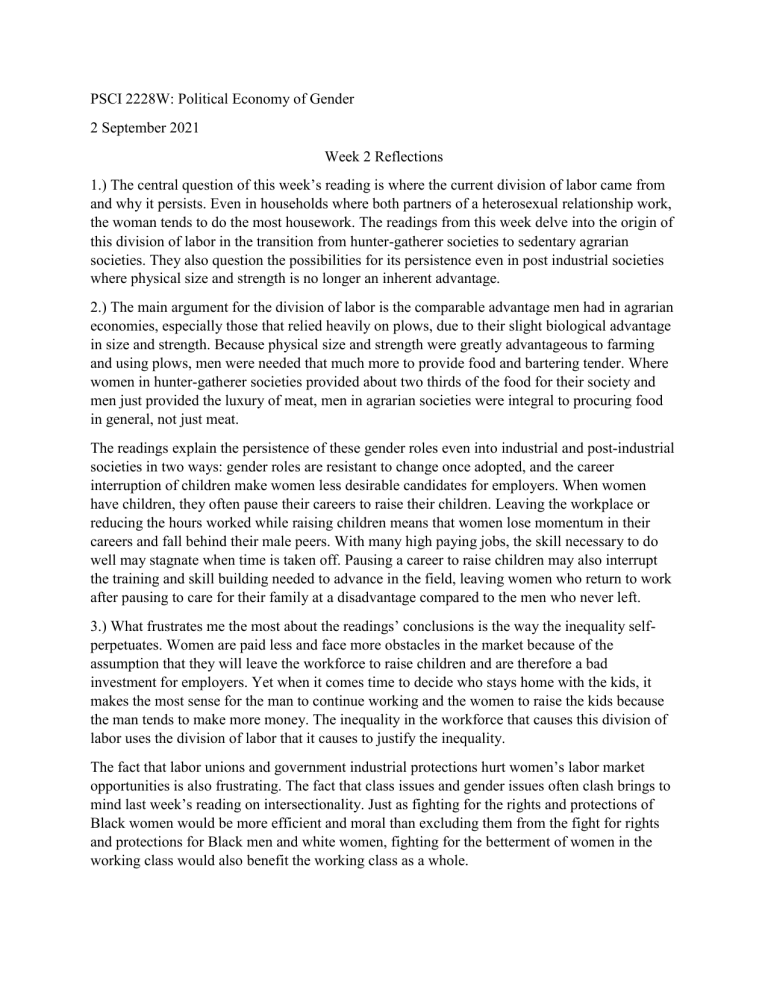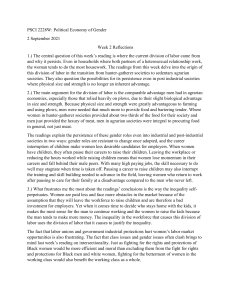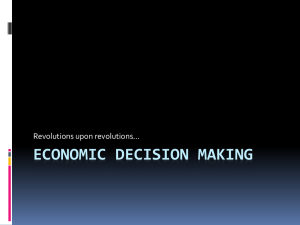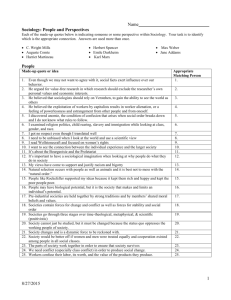
PSCI 2228W: Political Economy of Gender 2 September 2021 Week 2 Reflections 1.) The central question of this week’s reading is where the current division of labor came from and why it persists. Even in households where both partners of a heterosexual relationship work, the woman tends to do the most housework. The readings from this week delve into the origin of this division of labor in the transition from hunter-gatherer societies to sedentary agrarian societies. They also question the possibilities for its persistence even in post industrial societies where physical size and strength is no longer an inherent advantage. 2.) The main argument for the division of labor is the comparable advantage men had in agrarian economies, especially those that relied heavily on plows, due to their slight biological advantage in size and strength. Because physical size and strength were greatly advantageous to farming and using plows, men were needed that much more to provide food and bartering tender. Where women in hunter-gatherer societies provided about two thirds of the food for their society and men just provided the luxury of meat, men in agrarian societies were integral to procuring food in general, not just meat. The readings explain the persistence of these gender roles even into industrial and post-industrial societies in two ways: gender roles are resistant to change once adopted, and the career interruption of children make women less desirable candidates for employers. When women have children, they often pause their careers to raise their children. Leaving the workplace or reducing the hours worked while raising children means that women lose momentum in their careers and fall behind their male peers. With many high paying jobs, the skill necessary to do well may stagnate when time is taken off. Pausing a career to raise children may also interrupt the training and skill building needed to advance in the field, leaving women who return to work after pausing to care for their family at a disadvantage compared to the men who never left. 3.) What frustrates me the most about the readings’ conclusions is the way the inequality selfperpetuates. Women are paid less and face more obstacles in the market because of the assumption that they will leave the workforce to raise children and are therefore a bad investment for employers. Yet when it comes time to decide who stays home with the kids, it makes the most sense for the man to continue working and the women to raise the kids because the man tends to make more money. The inequality in the workforce that causes this division of labor uses the division of labor that it causes to justify the inequality. The fact that labor unions and government industrial protections hurt women’s labor market opportunities is also frustrating. The fact that class issues and gender issues often clash brings to mind last week’s reading on intersectionality. Just as fighting for the rights and protections of Black women would be more efficient and moral than excluding them from the fight for rights and protections for Black men and white women, fighting for the betterment of women in the working class would also benefit the working class as a whole.







